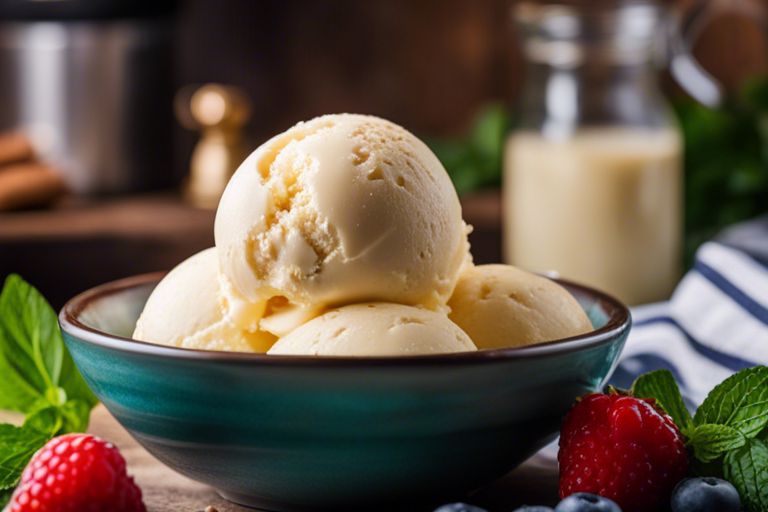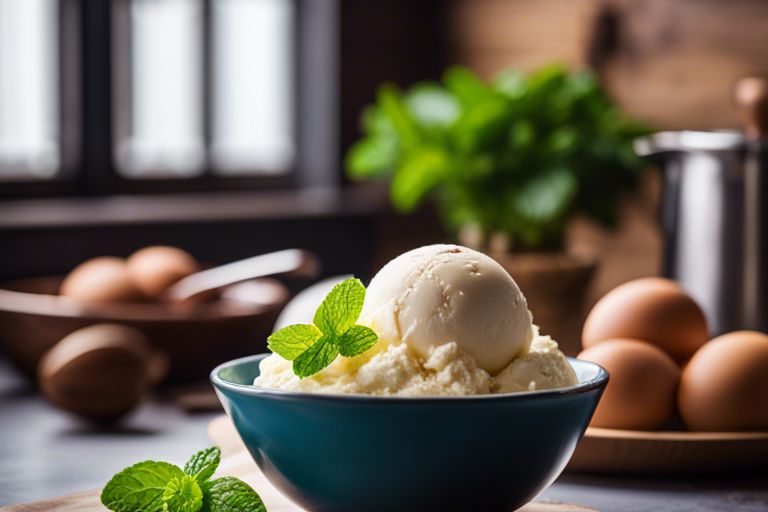Just can’t seem to get your homemade ice cream to taste as good as the store-bought version? Look no further, as we uncover the ultimate secret to achieving perfect homemade ice cream every time. From ingredients to equipment to technique, we’ll guide you through the crucial steps to creating a creamy and delicious frozen treat that will rival any professional ice cream shop. Say goodbye to icy or grainy textures and hello to smooth and rich scoops of homemade ice cream that will impress even the toughest dessert critics!
Key Takeaways:
- Use high-quality ingredients: To achieve perfect homemade ice cream, start with fresh and high-quality ingredients such as cream, milk, sugar, and any additional flavors or mix-ins.
- Proper freezing and churning: Make sure to chill your ice cream base thoroughly before churning it in your ice cream maker. Follow the manufacturer’s instructions for churning to ensure the right texture and consistency.
- Allow for proper hardening: After churning, allow your ice cream to harden in the freezer for a few hours before serving. This will improve the texture and help the flavors meld together for a more delicious treat.
Understanding Ice Cream Basics
The secret to perfecting homemade ice cream lies in understanding the fundamental principles behind this delightful frozen treat. By grasping the science and necessary ingredients that go into making ice cream, you can elevate your culinary skills and create decadent desserts that will impress your friends and family.
The science of ice cream
Cream, sugar, and air are the three primary components of ice cream. The cream provides the rich, smooth texture, while sugar not only adds sweetness but also lowers the freezing point of the mixture. Incorporating air during the churning process creates a light and airy consistency, giving ice cream its signature mouthfeel.
With the right balance of fat, sugar, and air, you can achieve the perfect scoopable consistency in your homemade ice cream. Understanding how these elements interact and affect the final product is crucial for mastering the art of ice cream making.
Key ingredients for a successful base
Cream is the most important ingredient when it comes to making ice cream. It’s necessary to use high-quality cream with a high fat content to ensure a rich and creamy end result. Sugar is another crucial element, not just for sweetness but also for texture. Too much sugar can lead to a soft and overly sweet ice cream, while too little can result in a hard and icy dessert.
Techniques for Perfect Consistency
Clearly, achieving the perfect consistency in homemade ice cream is crucial for a successful batch. Consistency is key to creating a smooth and creamy texture that will make your homemade treat truly irresistible. There are several techniques you can implement to ensure your ice cream turns out just right every time.
The importance of temperature control
Consistency is heavily dependent on maintaining the ideal temperatures throughout the ice cream making process. Here is a breakdown of the critical temperatures you need to keep in mind:
| Freezing | Keep the ice cream mixture chilled at around 40°F to prevent ice crystals from forming. |
| Churning | During churning, the mixture should be around 21°F to ensure proper aeration and texture development. |
Overcoming common textural challenges
Perfecting the texture of homemade ice cream can be tricky, but with the right techniques, you can overcome common challenges such as icy or grainy consistency. One effective method is to add stabilizers like cornstarch or tapioca starch to prevent ice crystals from forming and create a smoother texture.
Common textural challenges can also arise from over-churning or under-churning the ice cream mixture. Over-churning can result in a buttery texture, while under-churning can leave you with a soupy consistency. Finding the right balance and timing is key to achieving the perfect texture.
Flavor Mastery
In the matter of perfecting homemade ice cream, mastering the flavors is key to creating a truly exceptional treat. Whether you’re a fan of classic vanilla or adventurous with exotic flavors, understanding how to balance sweetness, richness, and flavor intensity is crucial.
Balancing sweetness, richness, and flavor intensity
With homemade ice cream, achieving the perfect balance of sweetness, richness, and flavor intensity can take your creation from good to great. Start by carefully selecting high-quality ingredients that will contribute to the overall taste profile of your ice cream. Experiment with different levels of sugar to find the right sweetness that complements the flavors you’re working with. Balance the creaminess and richness of your base with the intensity of the flavorings you add.
Consider the individual characteristics of each flavor you incorporate and adjust the recipe accordingly. For example, if you’re making a fruity ice cream, you may need to increase the sweetness to balance the natural tartness of the fruit. Take the time to taste and adjust as you go to ensure every batch is perfectly balanced.
Incorporating add-ins and variegations
Incorporating add-ins and variegations into your homemade ice cream can take your flavor game to the next level. Whether you’re swirling in ribbons of fudge, adding chunks of cookies, or mixing in fresh fruit, the possibilities are endless. These additions not only enhance the flavor but also add texture and visual appeal to your creations.
Flavor intensity is key when incorporating add-ins and variegations. You want these elements to complement the base ice cream flavor without overpowering it. Be mindful of the balance between the creaminess of the base and the textures of the add-ins, ensuring each bite is a harmonious blend of flavors and textures.

Advanced Tips and Tricks
Now, let’s explore some advanced tips and tricks that can take your homemade ice cream to the next level.
- Using stabilizers and emulsifiers
Stabilizers Stabilizers help improve the texture of your ice cream by preventing ice crystals from forming and reducing melting. Emulsifiers Emulsifiers help bind the fats and water in your ice cream mixture, resulting in a smoother and creamier texture. - The role of aging the mixture
Using Aging the mixture allows the flavors to meld together and the fat to solidify, resulting in a richer and smoother ice cream.
Using stabilizers and emulsifiers
Emulsifiers are necessary for creating a stable mixture that incorporates air efficiently during the churning process. They also help prevent the fats and liquids from separating, resulting in a silky smooth texture. Stabilizers, on the other hand, improve the structure of the ice cream by controlling ice crystal formation and preventing the mixture from becoming too icy.
For instance, using a combination of lecithin as an emulsifier and guar gum as a stabilizer can significantly enhance the texture and creaminess of your homemade ice cream. Experiment with different types and ratios of stabilizers and emulsifiers to find the perfect balance for your preferred ice cream consistency.
Final Words
On the whole, the secret to perfecting homemade ice cream lies in mastering the balance between creaminess, sweetness, and flavor. By using high-fat dairy products, well-balanced sweeteners, and quality ingredients, you can create a delicious homemade treat that rivals any store-bought ice cream. Experimenting with different recipes, techniques, and ingredients will help you find the perfect combination that suits your taste preferences. With patience and practice, you can easily master the art of making homemade ice cream that will impress family and friends alike.
FAQ
Q: What is the secret to perfecting homemade ice cream?
A: The secret to perfecting homemade ice cream lies in using high-quality ingredients, ensuring the mixture is properly chilled before churning, and investing in a good quality ice cream maker.
Q: How can I prevent ice crystals from forming in my homemade ice cream?
A: To prevent ice crystals from forming in your homemade ice cream, make sure the mixture is properly chilled before churning, use a high-fat content dairy base like heavy cream, and add a tablespoon of alcohol such as vodka or rum to the mixture to inhibit crystal formation.
Q: Can I customize the flavors of my homemade ice cream?
A: Absolutely! The beauty of homemade ice cream is the ability to customize flavors to your liking. Experiment with different mix-ins, extracts, and fruits to create unique and delicious ice cream flavors. Just make sure to balance the flavorings with the base to achieve the perfect texture and taste.

